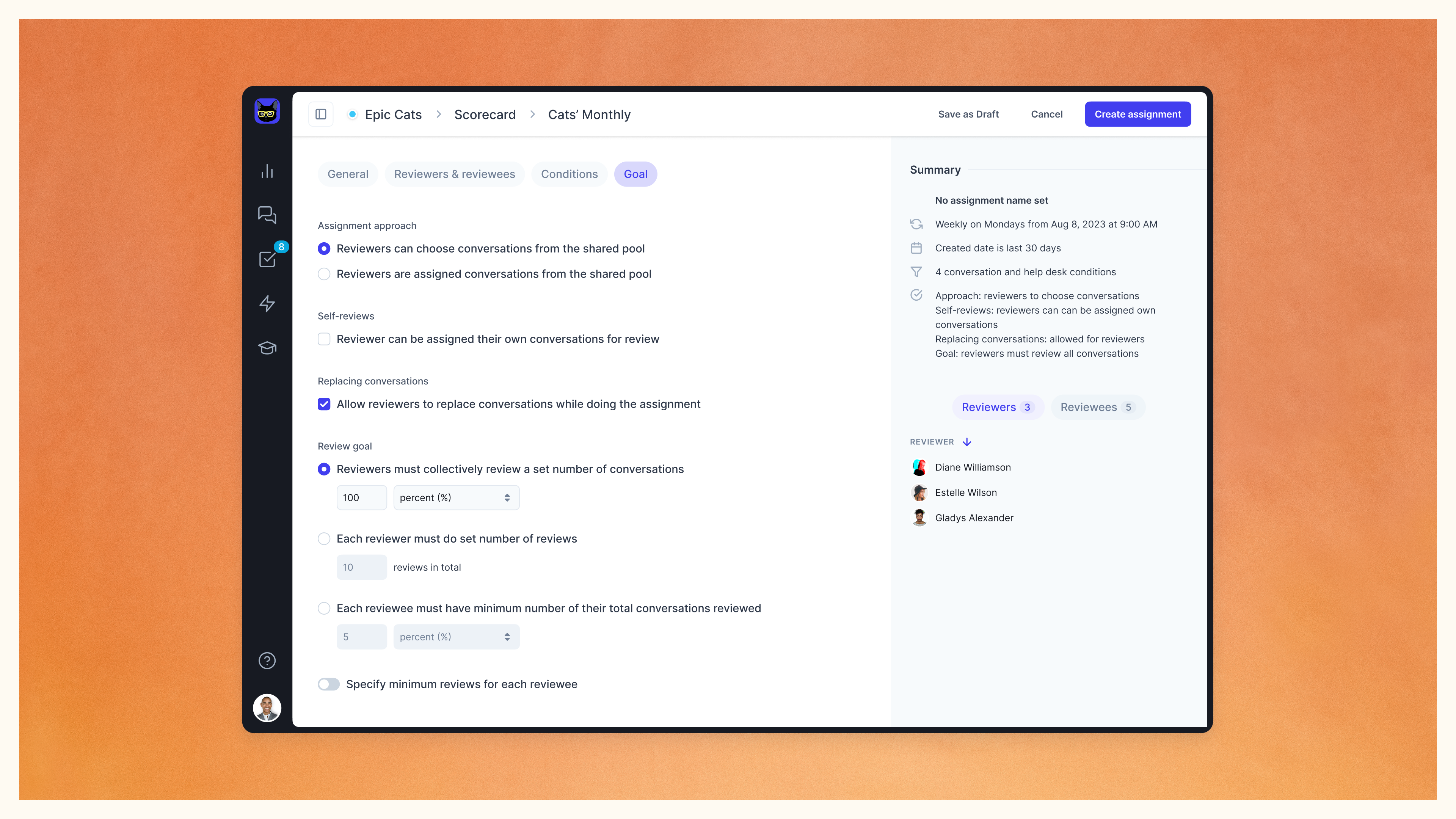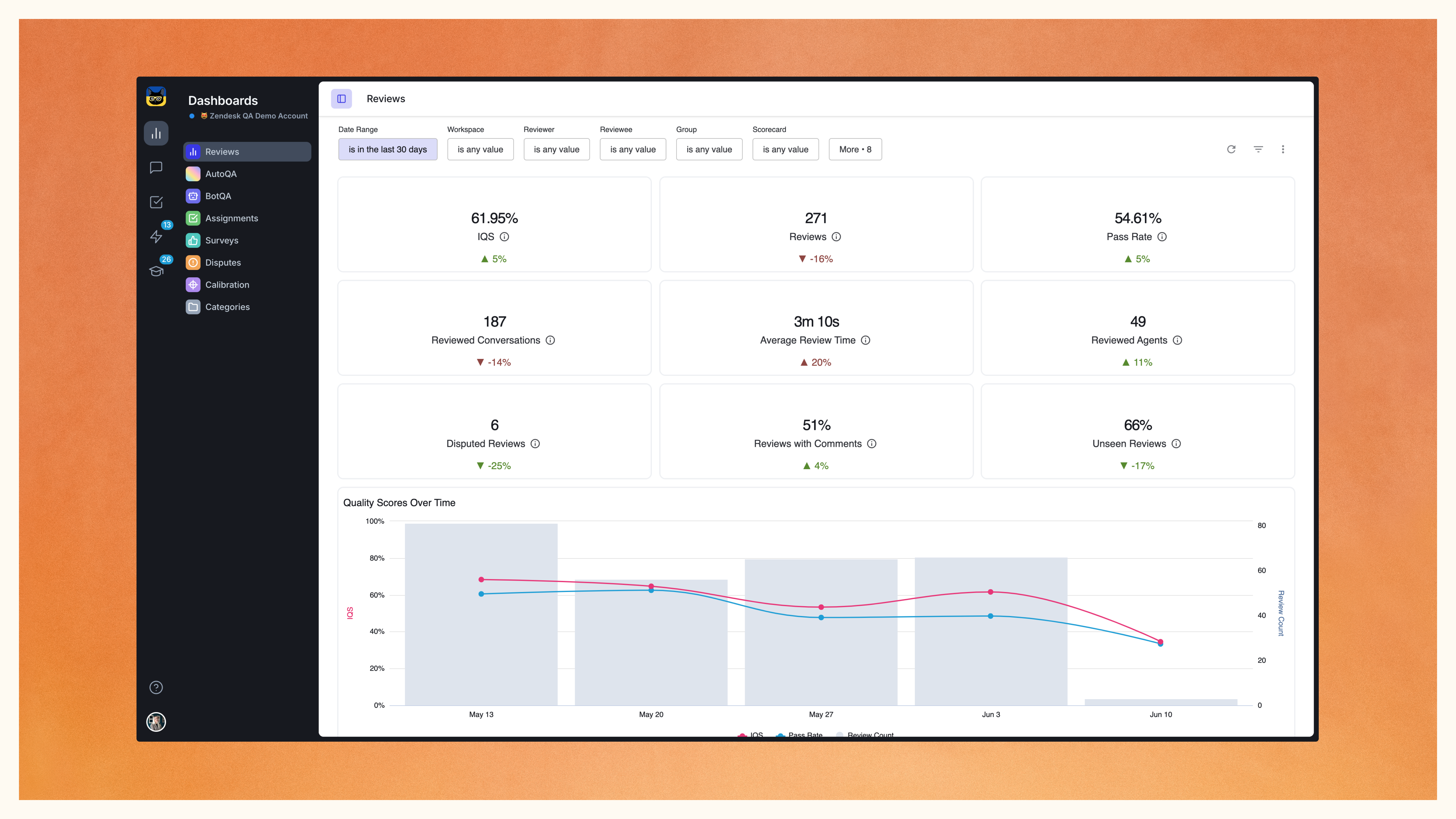Giving regular and meaningful feedback to your team is key for making quality assurance effective.
However, manually selecting and assigning the right conversations to evaluate can be both challenging and time consuming – particularly for large and growing teams
With Klaus, you can automate review assignments to:
- Guarantee consistency and fair distribution of conversations among reviewers
- Ensure a variety in your review samples, reducing bias or oversight
- Cover all agents so the interactions critical for review are seen
- Set clear targets and gain visibility into goal completion
Here’s what’s new:
- Improved setup flow featuring a new Assignment logic and goal options
- Convenient setup of Assignments directly from the Conversations view
- A clear overview of your to-dos with a more comprehensive Tasks list
The updated Assignments will be gradually rolled out to all accounts.
Setup flow updates: What has changed?
We’ve sharpened and improved the entire assignment setup flow, with new customizable options.
1. Improved cycle settings
You now have the option of selecting for review cycles to be repeated ‘never’ or ‘daily’ – in addition to weekly, bi-weekly, or monthly.
Additionally, all cycle types now include the ability to choose a timezone.
Now, you have the flexibility to select the start date and customize the recurrence pattern for the monthly cycle according to your preference, instead of a default from the first to last days of the month.
- Static conversation list per each cycle
Going forward, a fixed list of conversations will be generated at the beginning of each cycle. Once the assignment begins, this list will remain static and will not change, unlike before when it was subject to changes based on dynamic date ranges.

2. Select suitable reviewee types
The Participants tab is now called Reviewers & reviewees.
This part of the setup process remains largely the same, but now includes the option to specify the user type for reviewees, which can be one of the following:
- Workspace default
- Assignee
- Most active agent
- Participant

3. Aligned filtering conditions
Bridging the gap! Conversation filters and Assignment filters are now aligned.
When configuring Assignments, you now have access to the same set of filters available when searching for interactions to review in the Conversations view, including Sentiment.
What’s more, when browsing the filters in the Conversations view, you’ll notice there is a new button at the bottom of the filters view, allowing you to create an Assignment directly from there.
Clicking on the “Turn into assignment” button creates a duplicate of the filter set. The original filter will remain as is.
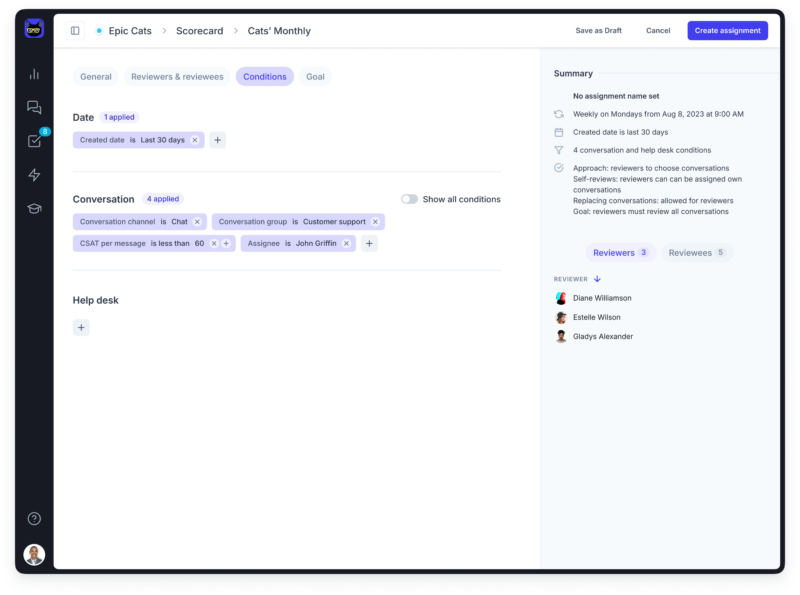
4. New assignment approaches and goals
Previously, when setting up goals for your assignments, the targets were strictly related to a number of conversations that need to be reviewed, either per reviewer or reviewee.
Now, when setting up an assignment, you firstly choose your assignment approach:
- Reviewers can choose conversations from the shared pool (new)
- Reviewers are assigned conversations from the shared pool
Then, when it comes down to setting a review goal, you now decide between:
- Setting a % or number of conversations you need to review collectively (new);
- Allocating a set number of reviews each reviewer needs to do, or;
- Fixing a number of reviews each reviewee should receive
Additionally, you can now specify a minimum number of reviews per each reviewee.
This expanded range of options provides greater adaptability to match your specific objectives and needs.
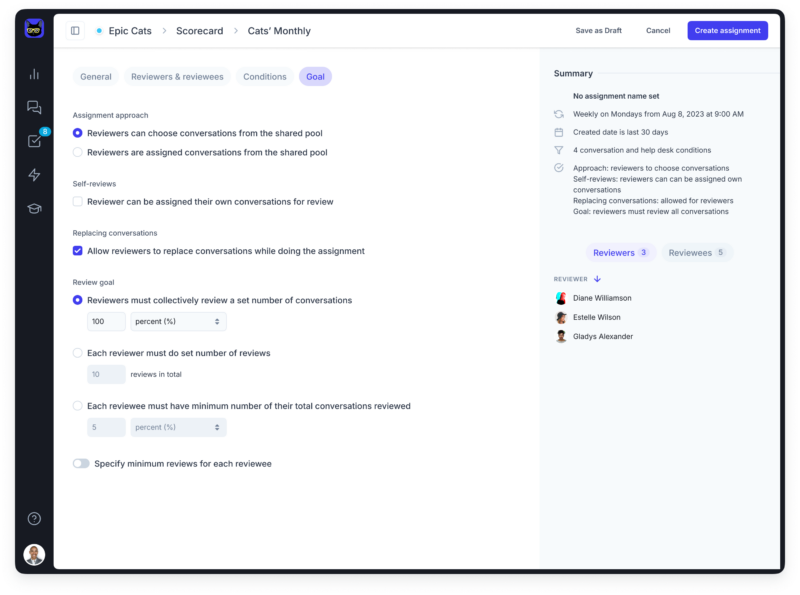
5. Updated preview modal
We’ve introduced a new summary of all the setup flow steps.
One of the most significant improvements to the preview modal is that it displays the expected results (reviewers and reviewees) as if the assignment were to start today. This means the future assignment results may vary.
Furthermore, with the introduction of the shared pool assignment approach, we’ve transitioned away from showcasing specific pairings of reviewers and reviewees. Instead, the goal is now set for the entire assignment, allowing each reviewer to contribute towards achieving that goal collectively.
When editing an active assignment, you will have the option to choose whether the changes should:
- Take effect immediately
- Be applied at the start of the new cycle
If the changes are implemented right away, the cycle is refreshed and a new task list is created. Already given reviews continue to count towards the assignment goal.
Tasks to keep tabs on your to-do’s
The refreshed Tasks view (previously Assignments) now serves as the central hub for all your assigned interactions awaiting to be reviewed.
Firstly, you’ll see that Calibration sessions have been relocated to the same menu, retaining their current functionality. However, creating calibration assignments for your team remains unavailable at the moment.
More importantly, all your active Assignments are conveniently consolidated under a single menu item, enhancing goal tracking and review queue overview.
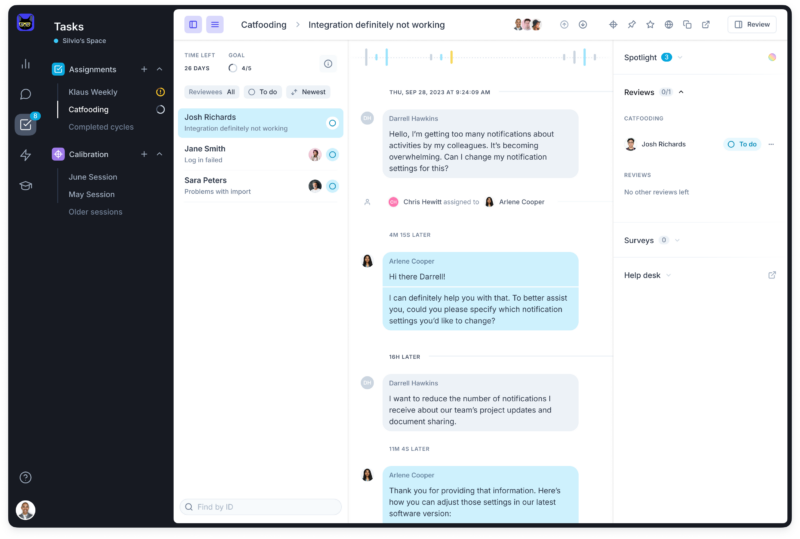
Within each assignment, you’ll find:
- Remaining time and progress towards goals
- Expanded filtering and sorting options for better organization
- Access to the complete list of conversations included in the current assignment cycle
Moreover, new status icons offer quick insights into the review status: whether it requires action, is in draft form, or has been completed.
Should you ever need clarity on an assignment’s purpose, certain roles in Klaus have access to an information icon located next to the sorting and filtering options. Clicking on this icon reveals a comprehensive assignment overview, detailing setup, progress, and cycle duration.

Replacing, removing and reassigning interactions
Previously, reviewers could skip conversations without providing any explanation for their decision.
Now, if a reviewer deems an assigned interaction irrelevant for evaluation, they are required to comment with a reason why.
Later, you can find the replaced and/or removed interactions using the “Removed” status filter in the conversation list view.
Moreover, for assigned reviews, manager roles now have the capability to reassign interactions to another reviewer. This feature is particularly useful in situations where a reviewer is on leave or may not be the most suitable person to handle the evaluation.
